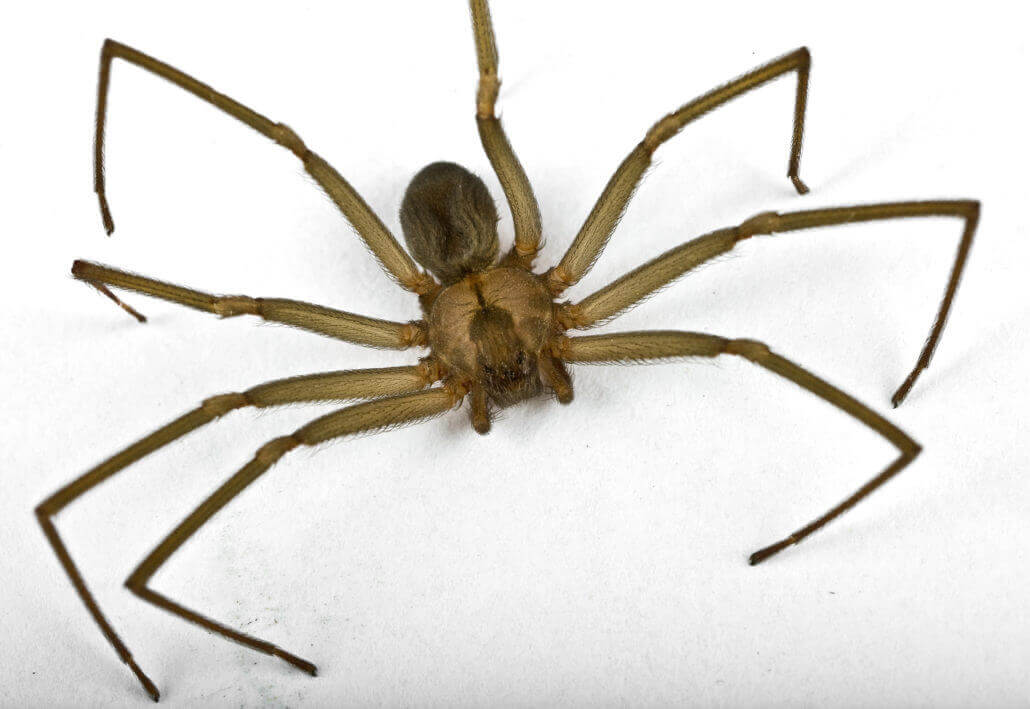Understanding the Brown Recluse Spider
Have you ever heard of the brown recluse spider? It’s a little creature that lives in different parts of the United States and has a reputation for being dangerous. But don’t worry! Not every encounter with this spider leads to trouble. In this article, we’ll explore what a brown recluse spider is, where it lives, what it looks like, and what to do if you ever find one. So, let’s dive in!
What is a Brown Recluse Spider?
The brown recluse is a type of spider that belongs to the Sicariidae family. This spider is often found in warmer areas, especially in the southern and central parts of the United States. While many spiders are harmless, the brown recluse can bite, and its bite can cause some serious problems. However, it’s important to remember that these spiders are not aggressive. They usually only bite when they feel threatened.
Physical Characteristics
Brown recluse spiders are small but can vary in size. They usually measure about 1/4 to 1/2 inch long. Their body is a light brown color, which helps them blend into their surroundings. One of the most distinctive features of this spider is the violin-shaped mark on its back. This mark is often a darker brown, which is why some people call them “violin spiders.” In addition to this, they have six eyes arranged in pairs, while most spiders have eight eyes.
Where Do They Live?
Brown recluse spiders are commonly found in the southern and central regions of the United States. You might spot them in states like Texas, Missouri, and Tennessee. They love to hide in dark and quiet places, which means you might find them in basements, attics, or even inside your shoes! They prefer warm, dry environments, so they often seek shelter in houses during colder months.
Why They’re Called “Recluse”
The name “recluse” is fitting because these spiders tend to be shy and avoid contact with humans. They prefer to stay hidden away in dark corners, under furniture, or in piles of clothes. This reclusive nature makes them less likely to be seen, which is why many people might not even know they have them around.
Brown Recluse vs. Other Spiders
It’s important to distinguish the brown recluse from other similar-looking spiders. Many people might confuse it with the common house spider or the wolf spider. Unlike these spiders, the brown recluse has that unique violin shape on its back and only six eyes. Knowing how to identify it can help you stay safe!
Common Misconceptions
Many myths surround the brown recluse spider. One common misconception is that they are everywhere and that they are extremely aggressive. In reality, they are not as common as some might think and only bite when they feel threatened. If you encounter one, it’s best to leave it alone rather than trying to catch it.
How to Stay Safe from Brown Recluse Spiders
Staying safe from brown recluse spiders is easier than you might think! Here are some tips to help you keep your home spider-free:
Clean Regularly
Spiders love to hide in dusty and cluttered areas. By keeping your home clean and organized, you can reduce the chances of attracting them. Make sure to vacuum regularly, especially in dark corners and under furniture.
Check Your Clothes and Shoes
Before putting on clothes or shoes that have been stored away, check them for spiders. Brown recluses like to hide in these cozy spots. It only takes a second to give your shoes a quick shake or check your clothes for any unwanted guests.
Seal Cracks and Openings
Spiders can sneak into your home through tiny cracks and openings. Take a moment to inspect your doors, windows, and any holes in your walls. Sealing these gaps can help keep spiders and other pests outside where they belong.
What Happens If You Get Bitten?
Getting bitten by a brown recluse spider can be scary, but knowing what to do can make it less frightening. If you think you’ve been bitten, follow these steps:
Recognizing the Symptoms
Initially, a brown recluse bite may not hurt much. However, after a few hours, you might start to notice some redness and swelling around the bite. In some cases, the area may develop a blister, and it could become quite painful. If you notice these symptoms, it’s essential to seek medical attention.
Seeking Medical Help
If you suspect that you’ve been bitten by a brown recluse, it’s best to visit a doctor right away. They can assess the bite and determine the appropriate treatment. In some cases, a doctor may prescribe medication to help with pain or inflammation.
The Healing Process
For many people, the bite will heal on its own with proper care. However, in some cases, the wound may develop into an ulcer, which requires further treatment. It’s crucial to follow your doctor’s advice and keep the bite clean to prevent infection.
Myths and Facts about Brown Recluse Spiders
Let’s take a moment to debunk some myths about brown recluse spiders. Many people have misconceptions about these spiders that can cause unnecessary fear. Here are a few myths and the facts that counter them:
Myth 1: Brown Recluse Spiders are Everywhere
Fact: While brown recluse spiders are found in several states, they are not as common as many people believe. They are more prevalent in certain regions, and most people will never encounter one.
Myth 2: They Will Chase You
Fact: Brown recluse spiders do not chase humans. They prefer to hide and will only bite if they feel threatened or cornered.
Myth 3: All Spider Bites are Dangerous
Fact: Most spider bites are harmless and do not require medical treatment. While brown recluse bites can be serious, they are not the only type of spider bite, and many spiders are beneficial to our environment.
How to Identify a Brown Recluse Spider
Knowing how to identify a brown recluse spider can help you stay safe. Here are some key characteristics to look for:
Body Shape and Size
Brown recluse spiders are generally small, with a body length of about 1/4 to 1/2 inch. Their bodies are often a light brown color, making them hard to spot against various surfaces.
The Violin Mark
One of the most recognizable features of the brown recluse is the violin-shaped mark on its back. This mark can vary in color but is typically darker than the rest of the body.
Six Eyes
Unlike most spiders that have eight eyes, brown recluse spiders have only six. Their eyes are arranged in three pairs, which is a unique feature that can help with identification.
Prevention Measures
Preventing brown recluse spiders from entering your home is key to staying safe. Here are some practical measures to keep these spiders at bay:
Reduce Clutter
As mentioned earlier, keeping your living space tidy is essential. Clutter provides hiding spots for spiders. By reducing clutter, you’re not only making your home more pleasant, but you’re also minimizing spider habitats.
Outdoor Maintenance
Brown recluse spiders like to hide in piles of wood, leaves, or debris outside. Regularly cleaning up your yard can deter them from making their home too close to yours. Make sure to store firewood away from your house and keep bushes and trees trimmed.
Use Essential Oils
Some people find that certain essential oils, like peppermint or tea tree oil, can help repel spiders. You can mix a few drops of these oils with water in a spray bottle and use it to treat areas where spiders are likely to hide.
Fun Facts about Brown Recluse Spiders
Learning more about brown recluse spiders can help make them less scary. Here are some fun facts:
They Are Loners
Unlike some other spider species that live in groups, brown recluse spiders prefer to be alone. They don’t build webs to catch their prey, which makes them quite different from many other spiders.
They Eat Insects
Brown recluse spiders primarily feed on small insects. By controlling the insect population, they play an important role in the ecosystem.
They Have a Unique Defense Mechanism
When threatened, brown recluse spiders often try to escape rather than fight. This shy behavior is part of what makes them reclusive.
Conclusion
The brown recluse spider may sound scary, but with the right knowledge, you can feel safe around them. Remember that they prefer to hide and are not aggressive. Keeping your home clean, checking for spiders, and knowing what to do if bitten can help you avoid any problems. If you ever encounter a brown recluse, respect its space and let it be.
By understanding this little creature better, you can appreciate its role in nature while keeping yourself and your family safe.

